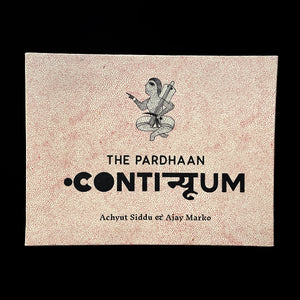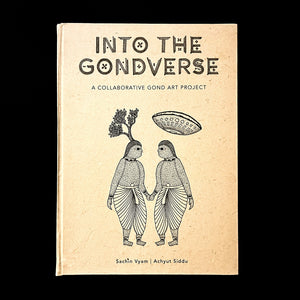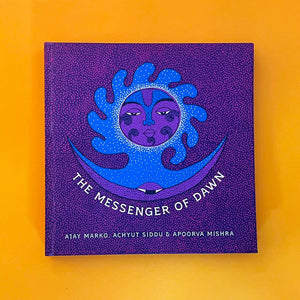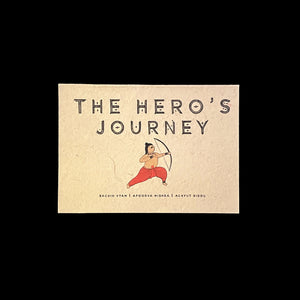FAQs
How do you pronounce Loksutr and what does it mean?
Loksutr is pronounced as Low-k,Soot-r. The word "loksutr" is a compound word of "Lok" meaning folk, people, and in some contexts even the world, and the word "sutr" literally means a thread. Sutr in Indian literary traditions refers to an aphorism or a collection of aphorisms in the form of a manual or, more broadly, a condensed manual or text. Loksutr hence is a thread, an extraction out of the rich socio-cultural tapestry of indigenous communities.
Who are the founders behind Loksutr?
Click here to find out
Could you elaborate on what exactly does Loksutr do?
Loksutr is a social enterprise that enables indigenous communities to transform their intangible cultural heritage and traditional knowledge systems into contemporary collectibles by fostering community-based inventorying and capacity building along with value-addition innovations, and new media collaborations. All our Products and Services are rooted in the following innate aspects of the community:
- Oral traditions and expressions: This includes proverbs, riddles, tales, legends, myths, epic songs and poems, charms, chants, songs, and more.
- Performing arts: This includes music, dance and theatre, pantomime, songs, and other forms of artistic expression that are passed down from generation to generation.
- Social practices, rituals, and festive events: These are the activities that structure the lives of communities and are shared by members—for example, initiation rites, burial ceremonies, seasonal carnivals, and harvest celebrations.
- Knowledge and practices concerning nature and the universe: These refer to know-how and skills that communities have developed by interacting with their natural environments and may be expressed through language, memories, spirituality, or worldviews. Traditional methods of architecture, agriculture, cattle breeding, and cuisine are among the related elements.
- Traditional craftsmanship: This refers to the skills and knowledge involved in craftsmanship than the products themselves. Examples include tribal painting, pottery, woodwork, jewelry and precious stones, embroidery, carpet weaving, musical instrument production, weaving, and fabric production.
What is the problem that Loksutr is solving?
India’s Indigenous communities' intangible cultural heritage is at risk of being lost forever. Amidst the corrosive forces of migration, rapidly increasing reliance on technology, globalization, and mass media, these communities are losing their connection to their unique socio-cultural fabric, resulting in the erosion of their traditional knowledge systems and cultural heritage. Loksutr aims to solve this by enabling indigenous communities to productize their traditional knowledge systems and intangible cultural heritage through community-based inventorying, capacity building, value-addition innovations, and new media collaborations.
Productizing India's indigenous and intangible cultural heritage ensures
- A robust safeguarding of the communities’ innate human capital, collective memory, and sense of identity for current and future generations.
- The generation of livelihoods that are genuinely sustainable since they deploy skills that are hyperlocal, intergenerational and arise out of the communities' unique socio-cultural fabric.
How does Loksutr propose to solve the problem?
Loksutr is a social enterprise that empowers indigenous communities to preserve and monetize their intangible cultural heritage and traditional knowledge systems. We do this by working closely with Indigenous communities to create digital inventories of their cultural heritage, provide them with systems and tools that build their capacity to value-add to their traditional knowledge, and foster collaborations with new media artists and tools to augment and showcase their unique offerings to the rest of the world in the form of contemporary collectibles.
Listed below is our standard operating procedure:
- Compile a list of traditions and customs by working with the members of the selected community.
- Identify tradition bearers and elders within the community who act as a vital thread in the dissemination of their collective knowledge from one generation to the other.
- Consider which traditions, customs, or knowledge are under the greatest pressure or risk of extinction.
- Developing training modules that empower the new generation to document and create digital inventories of their cultural heritage in collaboration with the tradition bearers and elders.
- Collaborating with the artisans and craftsmen within the community to develop effective means of celebrating and incorporating these pieces of intangible cultural heritage in existing community structures. ( i.e. village museums, community/cultural centers, festivals/events)
- Design participatory product development workshops and programs in collaboration with new media artists, industry experts, organizations and institutions, based on the identified intangible cultural heritage in the community.
- Creating the collectibles and deploying them at scale via various new media distribution channels like our E-commerce website, Blogs, Email newsletters, Social Media platforms, Video Sharing Platforms, Online Forums, Virtual and Augmented reality, Projection Mapping, Animation, 3D Virtual environments in the Metaverse, Podcasts, Vlogs and Webinars.
What is the uniqueness of the solution?
Our uniqueness lies in our approach, which on one hand is participatory, community-based and deploys skills that are hyper-local, and on the other equips and exposes the younger generation within the community with new media digital tools and technologies that incentivizes them to become torch bearers of their own cultural heritage. Our solutions are holistic and focus on five key areas of their cultural heritage: oral traditions, performing arts, social practices and rituals, knowledge and practices concerning nature and the universe, and traditional craftsmanship.
Product Development Methodology:
Loksutr heavily relies on a collaborative approach with Indigenous artisans and craftsmen for the product development of our collectibles. We focus on 4 core values:
1. Artisans over processes and tools:
Individual artisans from the community would drive the product development process and respond with agility to the market needs. They are the most important part of business development and are above processes and tools. Documentaries, Projection mapping, Animation, Augmented & Virtual Reality, and 3D Metaverse assets are tools that only augment and distribute the artisan’s work. If the processes or tools drive development, then the artisan would less likely respond and adapt to change. Thus, less likely to meet customer needs. The onus of augmenting these artisan communities’ inherent capacity is on us. Collaborations with designers and Industry experts would play an active role in this regard.
2. A clear focus on working prototypes over thorough documentation:
We experiment with a variety of materials like Neon glow-in-the-dark UV paints, fabrics, stone, glass ceramics, and metal. These are mediums that would be very new to the communities we are to work with. The processes for the product development would hence be rapid, highly iterative, and full of working prototypes. Constantly finding agile ways for design development is the only way to come up with a product line of market-ready prototypes. While our working method continues to place value on the process of documentation, it places a higher value on a corrective feedback loop, which accelerates the pace of innovation.
3. Active customer collaboration over post-consumption feedback:
Packaging solutions, Branding, Furniture, Apparel, Home Décor, and Toys are avenues that we wish our artisan communities to enter. Hyper-personalization of products is rapidly becoming a norm in customer behavior within these avenues. We thus wish to leverage this behavior by including the artisans existing consumer base in the development process.
Loksutr hence focuses on active collaboration between the consumer and the artisan. Preventing delays in negotiations between the two on the improvement of the product post-consumption, thus making it easier for the artisan groups to exactly meet the needs of their customers.
4. A heavy focus on being responsive to change:
Indigenous art and craft development usually avoid change because it is either considered an undesired expense or a threat to the art form. Yet, evolving the craft to better fit the rapidly changing times remains the only respite to these traditional practices.
The greatest metric of success for Loksutr thus is not the creation of fantastic products for the world to consume. But to instill within every indigenous community we work with the agility to respond effectively to changing times.
How does Loksutr generate revenue?
In terms of revenue generation, we deploy a multi-pronged approach. We generate revenue on our E-commerce website and other marketplaces by selling the products and services developed in collaboration with the Indigenous communities, such as tribal painting, folk storybooks, food recipes and ingredients, millet-based products, sculptures, pottery, woodwork, jewelry, embroidery, carpet weaving, musical instrument production, weaving, and fabric production.
We also generate revenue by offering cultural tourism experiences, conducting workshops and training programs, and providing consulting services to businesses that are interested in incorporating the intangible cultural heritage of Indigenous communities into their products and services.
How are the products, processes, and services of Loksutr truly innovative and not just an improvement of existing solutions in the market?
Product: Our products are innovative because they are contemporary collectibles that are designed to reflect the intangible cultural heritage of indigenous communities. They are not just regular souvenirs or mass-produced items, but unique products that tell the story of the community, their history, and their way of life.
Process: Our process is innovative because we use a participatory, community-based approach to create digital inventories of cultural heritage. We collaborate with artisans, craftsmen, and elders in the community to document their traditional knowledge and practices, which helps to preserve their heritage for future generations. We then use these inventories to develop contemporary collectibles that are designed to showcase the unique offerings of the community to the rest of the world.
Services: Our services are innovative because we offer a holistic approach to preserving and monetizing cultural heritage. We not only create digital inventories and develop contemporary collectibles but also provide capacity-building training to the community to value-add to their traditional knowledge. We also foster collaborations with new media artists and tools to augment and showcase their unique offerings to the rest of the world.
How is Loksutr creating a scalable business model with a high potential for employment generation and wealth creation?
Our business model is scalable because we work with multiple communities across India, each with its unique intangible cultural heritage, and offer a range of contemporary collectibles that appeal to a global market. We also provide training and capacity building to communities, which helps to generate employment and promote sustainability.
Moreover, our approach is participatory and community-based, which not only creates employment opportunities but also fosters a sense of collective ownership and pride in the community's cultural heritage. Our focus on value-addition innovations and new media collaborations allows for the creation of contemporary collectibles that have a broad market appeal and can be distributed via various new media channels, such as e-commerce websites, social media, and virtual reality platforms. This, in turn, creates additional opportunities for employment and wealth creation within the community.
Our business model creates a win-win situation for all stakeholders involved as it promotes cultural heritage preservation, empowers indigenous communities, and generates wealth.
Still have questions? Contact us or use the form below to send us an email.




